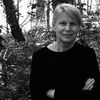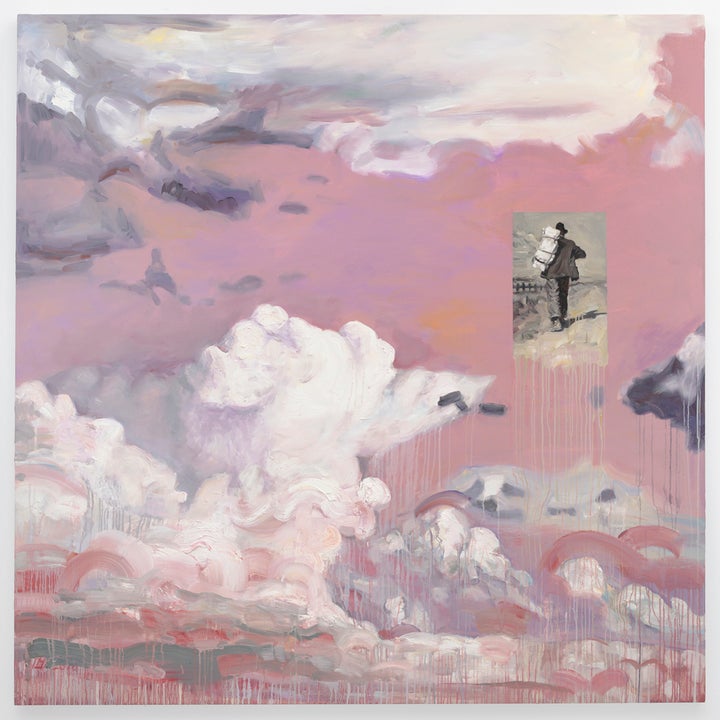
Anything Might Happen from American Exodus series by Hung Liu
Soon after the election, Hung Liu, Chinese born American contemporary painter, received a call from a younger artist who was struggling with the new political reality and its impact on so many communities who found themselves feeling vulnerable. Hung Liu sent her one of her favorite quotes, “This is precisely the time when artists go to work. There is no time for despair, no place for self-pity, no need for silence, no room for fear. We speak, we write, we do language. That is how civilizations heal.” Toni Morrison
This quote is not only a powerful call to action, but perhaps it exemplifies the spirit of Liu’s profoundly emotive art and the woman herself. Hung Liu, born in 1948, grew up during the Maoist regime. After high school graduation she was sent to the countryside during the Cultural Revolution for re-education. For four years, beginning in 1968, she spent seven days a week doing hard physical labor working alongside peasants. In 1972 she entered the Beijing Teachers College to study art in the Soviet Union’s tradition of Socialist Realism. Her assignments were limited to prescribed political projects. Liu, however, was more interested in supplementing her art education and began doing postcard sized landscape paintings to explore composition and color theory.
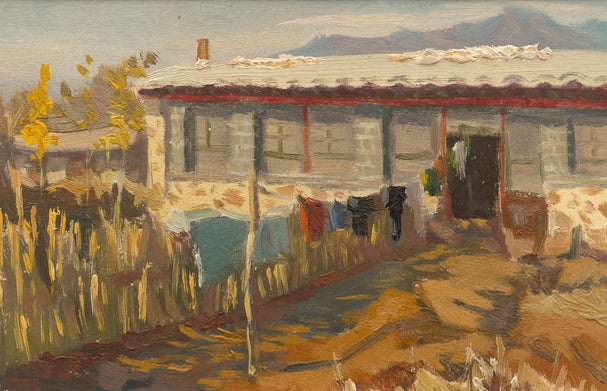
From My Secret Freedom, one of several small landscapes created in China by Hung Liu.
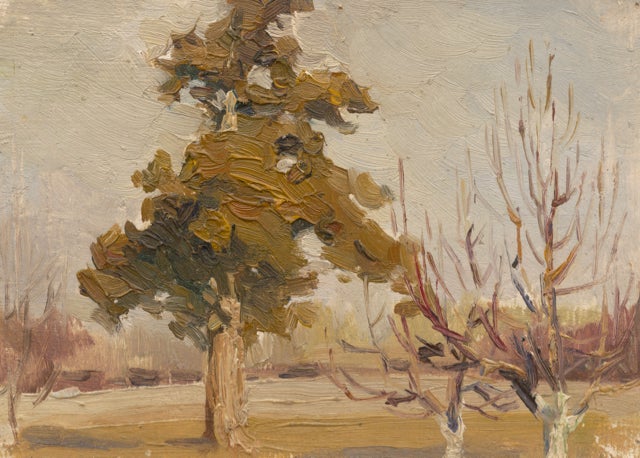
From My Secret Freedom, one of several small landscapes created in China by Hung Liu.
Her perception of her own work took on new meaning when one of her paintings was severely criticized and interpreted as a resistance to the revolution. (She painted the public bathroom as a part of the landscape.) After that incident, these small paintings became her secret assertion of personal freedom. She relished the stolen moments spent painting as a time in which she was not watched nor controlled. It was also during these short sessions that she developed a deep appreciation for nature. It reminded her “that there was something bigger than me and that I was not alone”. She describes her work in these small paintings as “having a dialog with the wider world.” Hung Liu completed one painting each day in secret for the remainder of her years in college. Only 30 of the 500-600 have survived. She would later name this series My Secret Freedom. Hung Liu looks back at this period of her life without bitterness and recognizes that her time spent in the countryside nurtured an affinity and compassion for those who suffer. This unique perspective would eventually find its way into her artwork.
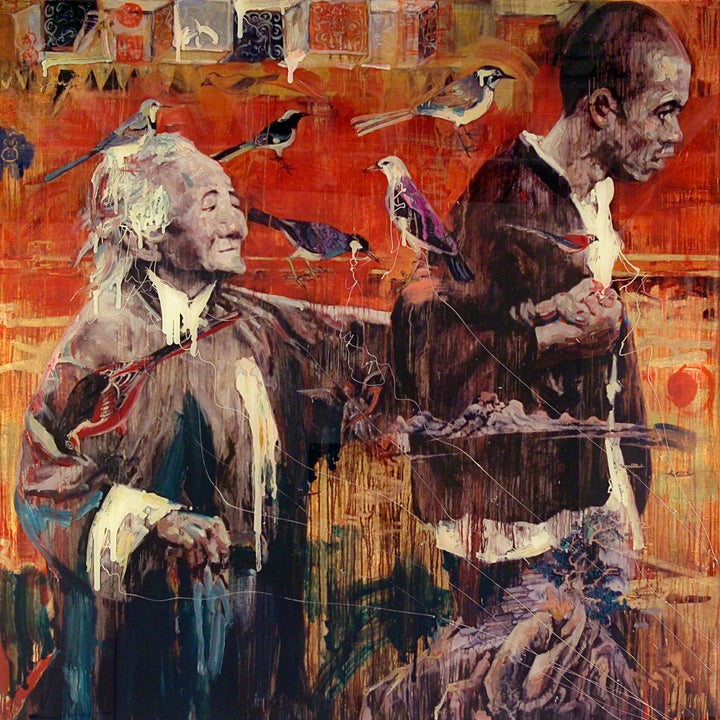
Wartime, Mother and Son
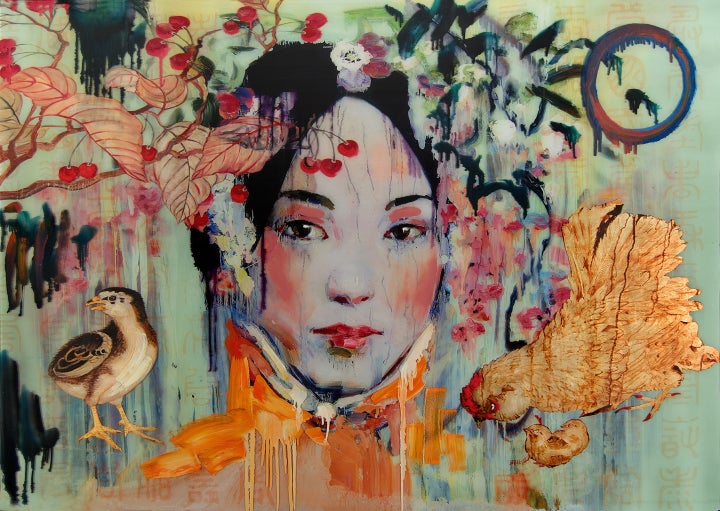
Cherry IV
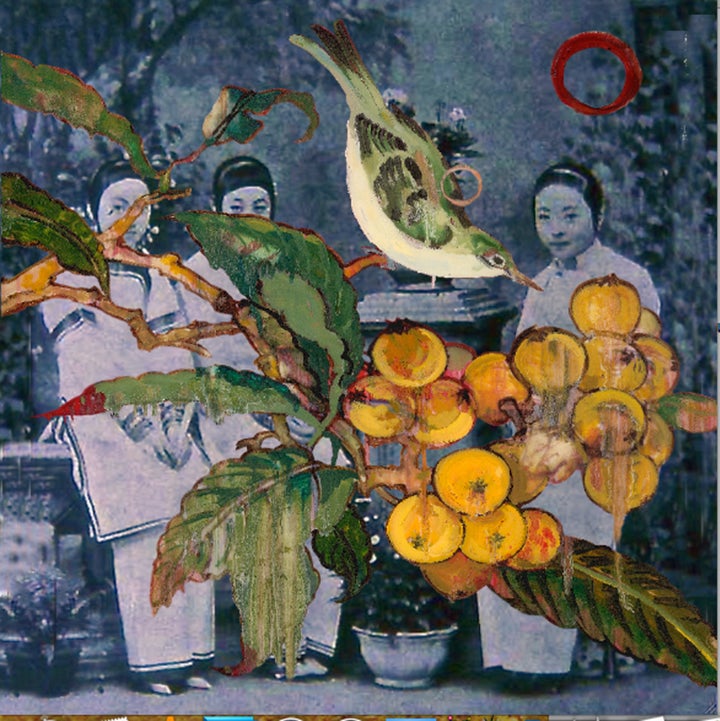
Loquats Blue
This journey to artistic expression was not a straight trajectory, but tethered to her own experiences and development as an artist. After teaching art at a Soviet Union Style School from 1975 - 1979 she completed a graduate program at China’s Central Academy of Fine Arts. An entirely new world opened for Hung Liu when she immigrated to the United States in 1984 to enter the MFA program at the University of California, San Diego. Thoughts of home, however, would merge into her work. As a result of her earlier experiences during the Cultural Revolution she states that, “I felt the weight of history.” Her work became known for its drip laden, richly color soaked realist portraits based on her own photographs from her time in the countryside, Chinese historical photographs and propaganda film stills. She transformed these faded photographs into part realist, part abstracted paintings effortlessly integrating humans with the natural world. These images serve as an animated testament to the people in the photographs. She went on to portray those early Chinese immigrants whom arrived in America well before her. These paintings feature refugees, peasants, prisoners, prostitutes, laborers and other common people. The paintings take on a visual language which goes beyond the subject’s physical appearance straight to their noble souls. The viewer is confronted with the terrible beauty of the human condition.
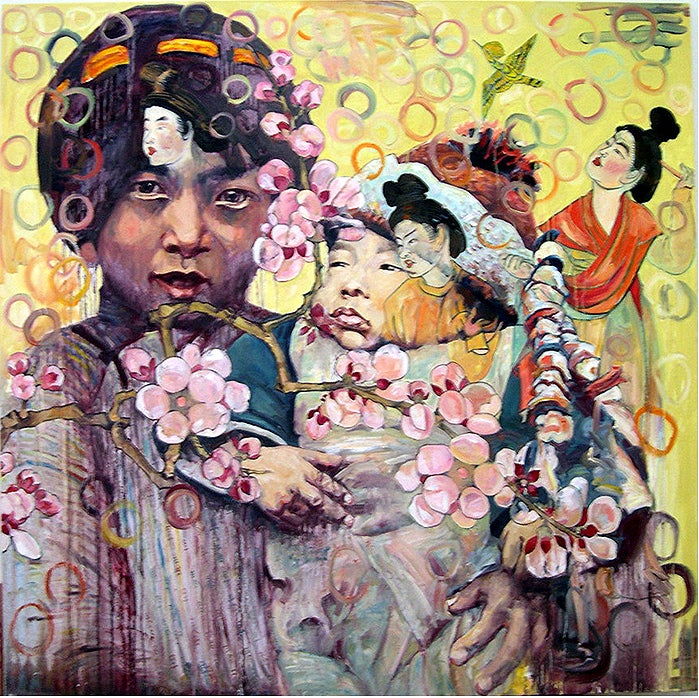
February
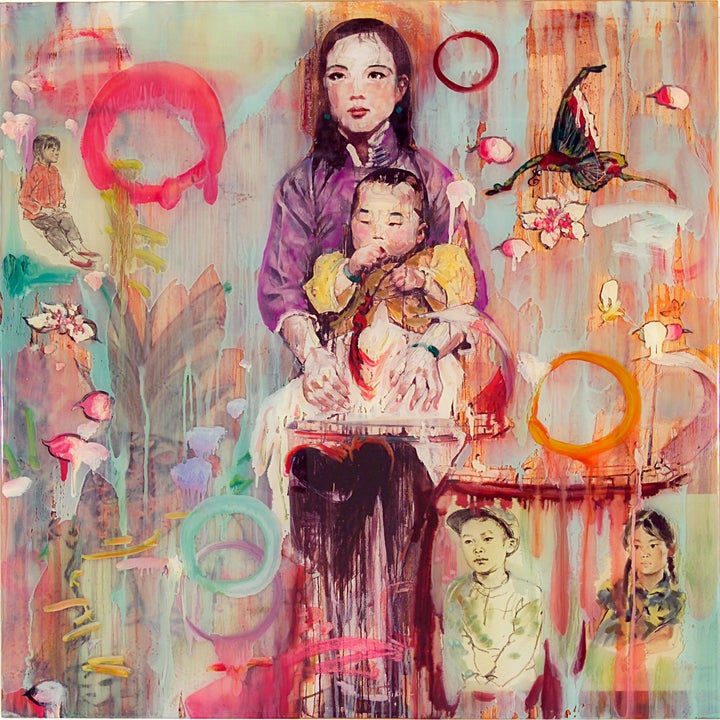
Mother and Son
It is in this seemingly simple documentation of everyman that a common thread binds both past and present work. The viewer may initially see a random selection of people, but Hung Liu sees the struggle of the poor and dispossessed beyond the boundaries of time or culture. Her paintings not only present the person’s subtly implied suffering but captures their dignity as well. In her world, race does not matter, but remembering that a common concern exists for all does. In her words, “Every generation wants to protect the next.” This universal essence of her work is evident in her routine portrayal of mother’s and children, similar to the iconic Madonna paintings. Hung Liu believes in the power of image. Just as in those early simple landscapes, her work enables the viewer to have a dialog with the wider world. She gifts the audience with the opportunity to look beyond their own experiences and recognize the humanity shared with the subjects of the paintings.
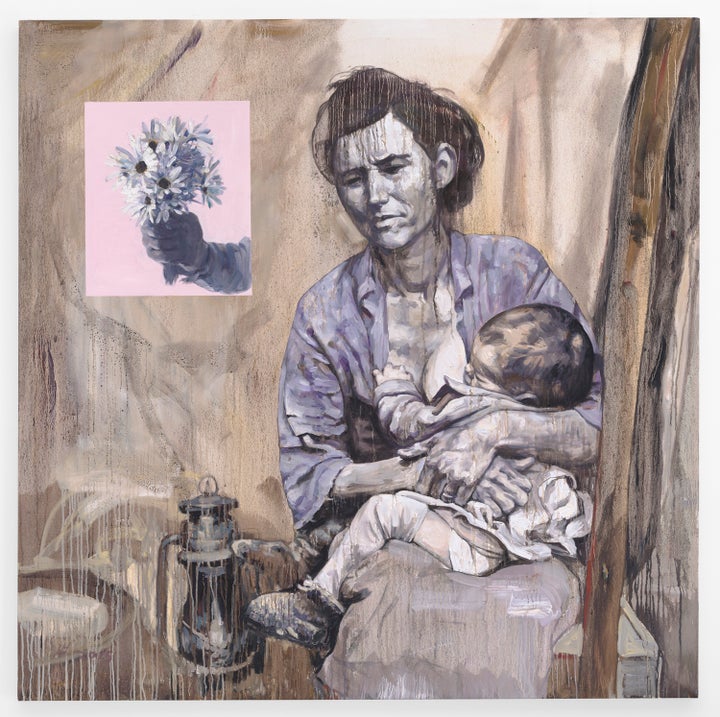
Migrant Mother from American Exodus.
She expands this idea in her new work, American Exodus, which was introduced in September of 2016 at the Nancy Hoffman Gallery, NY. Although some may interpret this work’s focus on the American Dust Bowl migration a departure from previous work because the subjects are not Chinese; Liu insists that this new work is not a pivot, but a natural extension of her previous work. These paintings are based on the photographs of Depression era photojournalist, Dorothea Lange. Liu counts Lange as one of her heroes and describes her first sitting going through the archives as a meeting with her mentor, a soul mate and a kindred spirit. Just as Lange’s haunting portraits effectively transcend time, Liu’s intention is to also bring compassion and dignity to the subjects of her paintings and to reach beyond the corporeal. She points out that in the Chinese language there is no past or future tense. She interprets these paintings as being beyond time or culture because the universal issues of poverty, displacement, and survival are still present. One only has to look at the current global refugee crisis to see the face of suffering. Her work begs the question and she asks, “Why is the world still struggling with these issues?” She continues to do what she has done for years: educate and spark questions and provoke reflection through her powerful and evocative paintings.
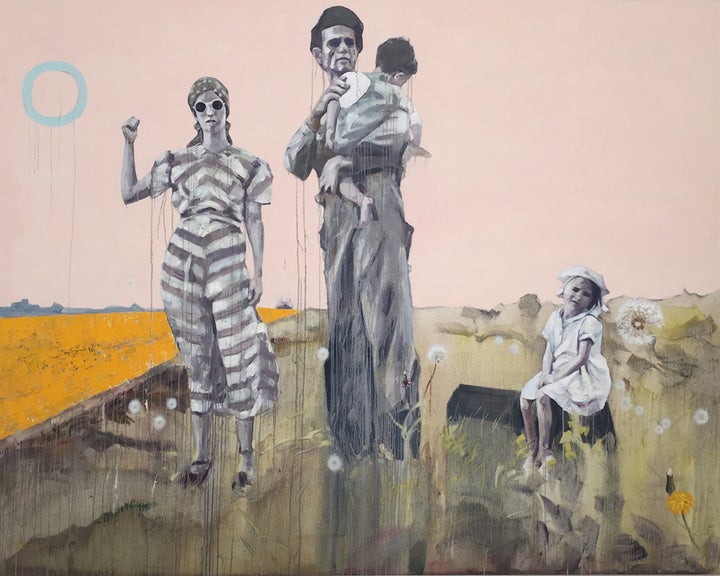
Not In Kansas from American Exodus.
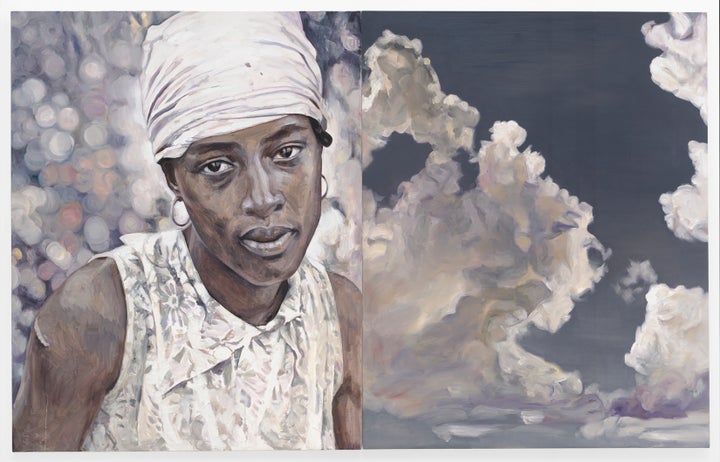
Cotton Hoer from American Exodus
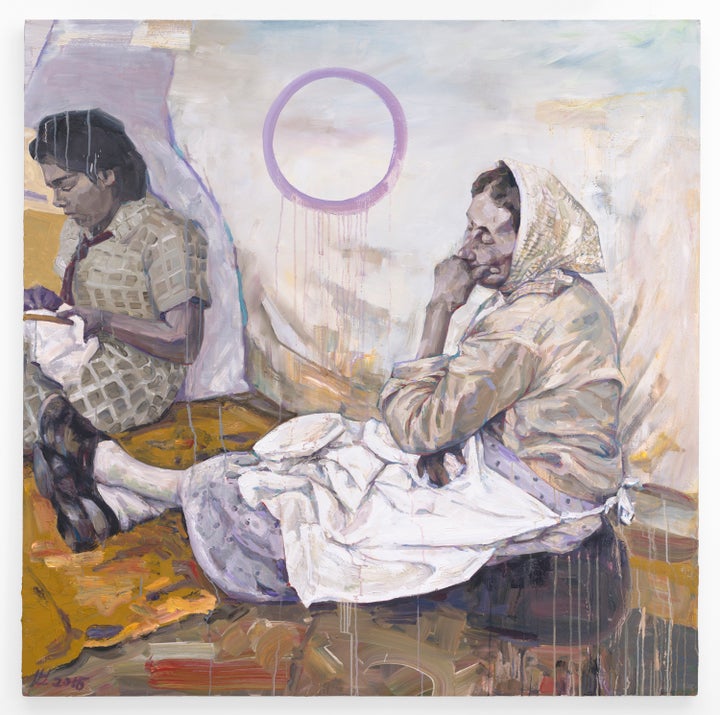
Stitchers from American Exodus
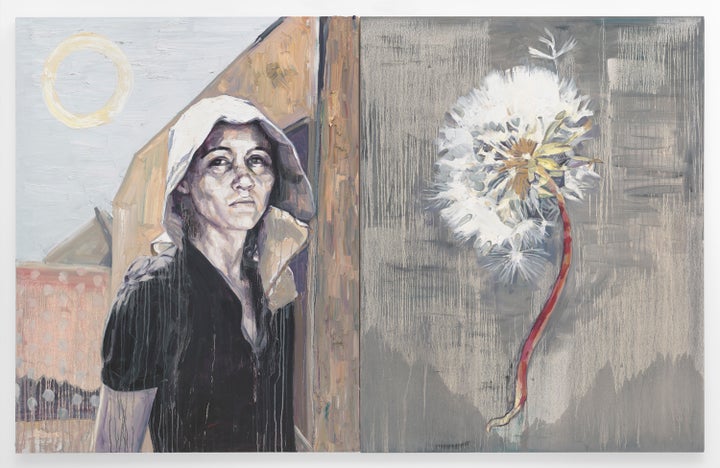
Weedpatch from American Exodus
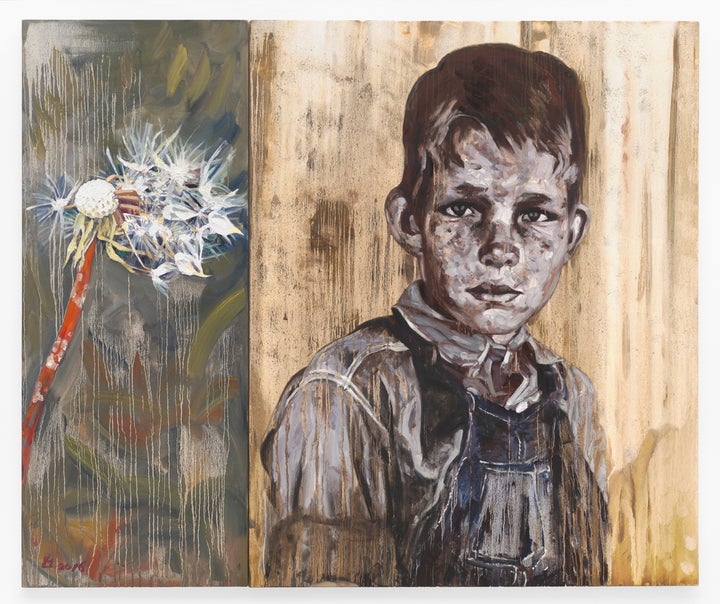
Okie from American Exodus
Hung Liu’s work and life have served as inspiration to many young artists through the years in her role as teacher and advisor at Mills College in Oakland, CA. In January, two of those former mentees, Monica Lundy and Gina Tuzzi, will be honoring Hung Liu with small portraits as a part of With Liberty and Justice for Some, an exhibition honoring immigrants, . This special exhibition at Walter Maciel Gallery in Los Angeles, January 7 - March 4, 2017 is a gathering of artists nationwide in response to the recent election and the rise of hateful rhetoric against immigrants. From Liu’s unique perspective as an immigrant, she says, “This country has been a beacon of hope and freedom for so many.” and expressed anger, disappointment and confusion over the recent turn of events. She believes, “Nothing can be taken for granted and it is up to each generation to nurture our freedoms”. In light of her rich and accomplished life and career, it is appropriate that she is being honored as an immigrant who has made a difference. Her work and her life continue to inspire many. Hung Liu’s courage, compassion, creativity and talent have shown us all a way to practice profound empathy to our fellow human beings and imagine a better way forward for the world.
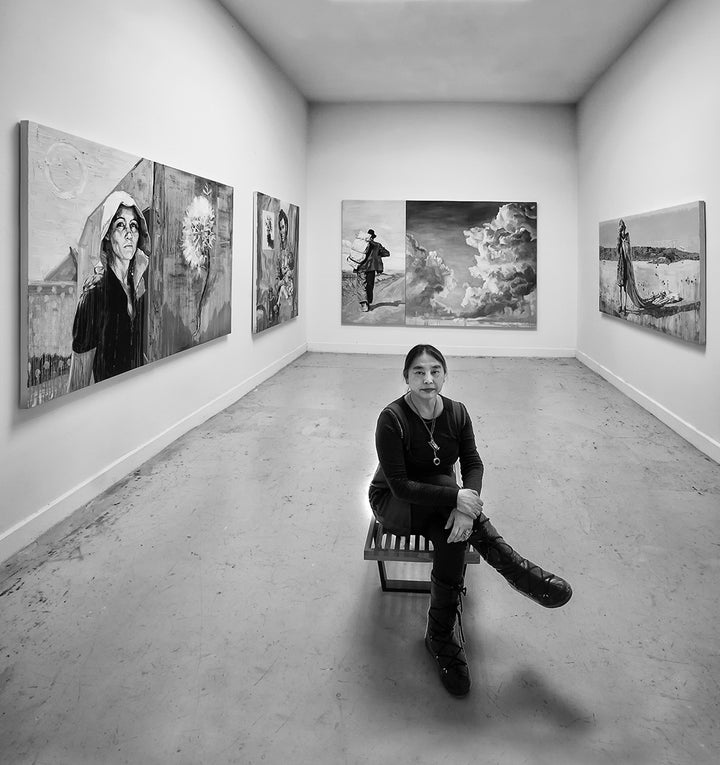
Contemporary Painter Hung Liu
Hung Liu is a two-time recipient of the National Endowment of the Arts Fellowship and of the 2016 Joan Mitchell Foundation Painters and Sculptor Grant. Her work has been extensively shown and collected by the Metropolitan Museum of Art, the National Gallery of Art, Washington DC, the Whitney Museum of American Art, NY, the San Francisco Museum of Art, the Los Angeles County Museum of Art and the Asian Art Museum of San Francisco. On January 21 she will be one of five speakers at the Woman’s March Bay Area which is one of 108 cities participating as a part of the National Women’s March held in Washington DC on the same day. More info. at www.hungliu.com.
